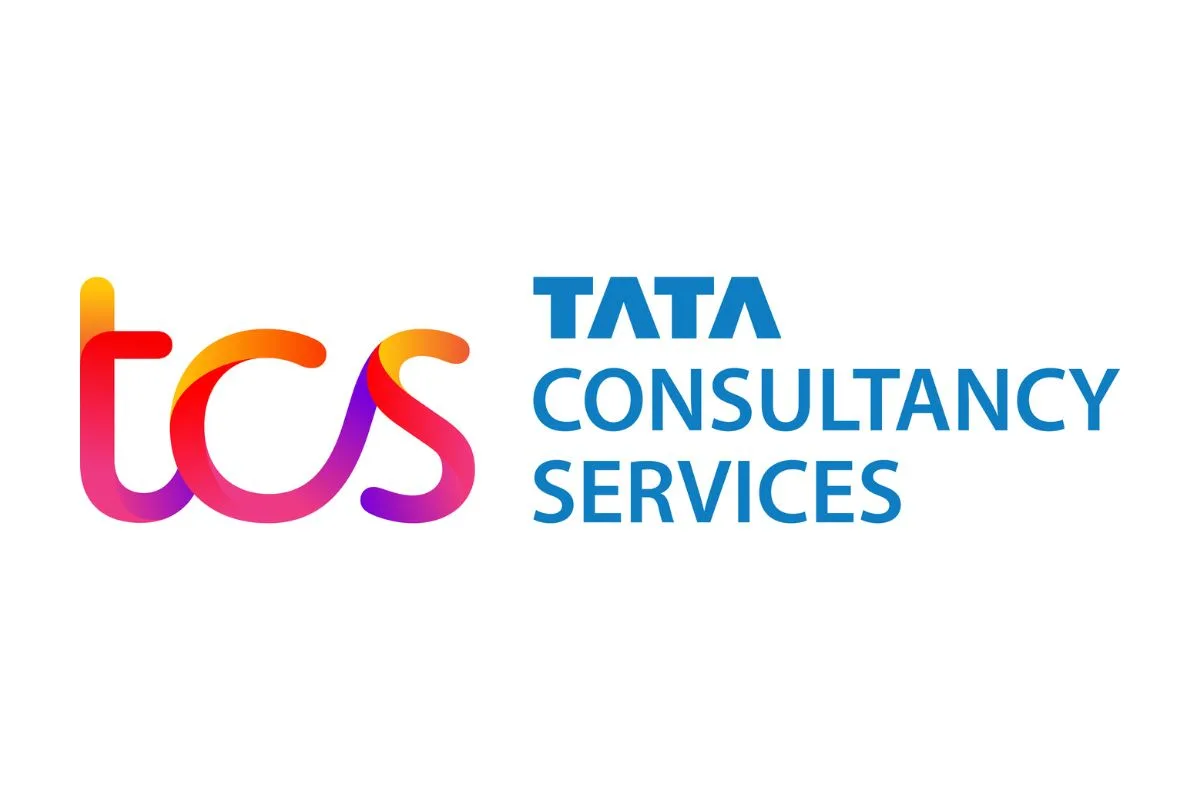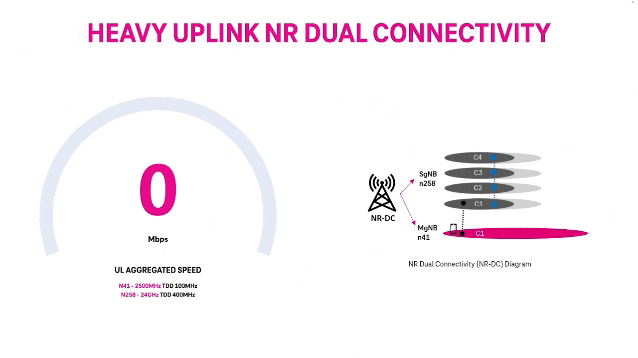Month: November 2024
Tata Consultancy Services: Critical role of Gen AI in 5G; 5G private networks and enterprise use cases
“In the realm of network management, Generative AI could play a critical role in predicting 5G data flow patterns and optimizing performance, ultimately improving the customer experience. Similarly, in the area of security, Gen AI could be pivotal in identifying and predicting threats before they occur, strengthening overall network security,” Mayank Gupta, Global Head (Sales and Strategy Network Solutions and Services) at Tata Consultancy Services (TCS), told the Economic Times of India.

5G adoption has been happening in stages he said. When asked about the 5G monetization challenges, Gupta opined that one of the main challenges has been fully understanding the business case or use case required by the industry. “It is not the traditional ‘design, deploy and get paid’ model. Instead, you have to engage with the industry, collaborate with various stakeholders and take an ecosystem approach. It is essential to understand the specific business needs, define the problem and then build solutions around that,” Gupta said.
“Two years ago, 5G was moving at a very slow pace, but it has gained significant momentum. Globally, the U.S. and Canada are leading the way, while countries like South Korea and Brazil are accelerating their adoption, largely due to the liberalization of their spectrum. From a deployment standpoint, mobile private networks are among the first areas seeing significant progress, with deployments growing rapidly. “The focus is shifting from just connectivity to a broader transformation of operational technology,” he added.
Over 50% of 5G mobile data is now coming from the enterprise sector, which has become a major focus. Different countries prioritize different use cases based on their needs.
Watch the video interview here:
…………………………………………………………………………………………………………………………………………………………………………………………………………………………………………………………….
References:
Tata Communications launches global, cloud-based 5G Roaming Lab
5G Made in India: Bharti Airtel and Tata Group partner to implement 5G in India
LightCounting & TÉRAL RESEARCH: India RAN market is buoyant with 5G rolling out at a fast pace
Reliance Jio in talks with Tesla to deploy private 5G network for the latter’s manufacturing plant in India
Communications Minister: India to be major telecom technology exporter in 3 years with its 4G/5G technology stack
India to set up 100 labs for developing 5G apps, business models and use-cases
Adani Group to launch private 5G network services in India this year
Telco spending on RAN infrastructure continues to decline as does mobile traffic growth
Telco spending on radio access network (RAN) infrastructure, which is the largest share of capex, has dropped sharply in the last couple of years. It fell 11% in 2023, to about $40 billion, according to Informa owned market research firm Omdia (see References below for Dell’Oro’s numbers).
For 2024, Omdia predicts another decline of between 7% and 9%. Instead of buying new equipment, telcos have used existing supplies in their where houses.
Traffic growth rates also appear to have slowed. The graphic used in Ericsson’s latest mobility report pictures this very clearly, showing a church steeple of a traffic spike in 2019 and 2020 before a shallower downward-sloping gradient to the first half of 2024. That’s shown in this chart:
.jpg?width=700&auto=webp&quality=80&disable=upscale)
Source: Ericsson
Ericsson’s latest numbers, available through its mobility visualizer tool, shows the monthly volume of global mobile data rose by just 4.34% in the second quarter of 2024, compared with the first quarter. This is much lower than the rate of 10.76% Ericsson observed in the corresponding quarter four years earlier. The actual increase in 2024 was 6.27 exabytes. In 2020, it was 4.86 exabytes.
RAN product revenues have been falling at their sharpest rate in many years despite the 6.27-exabyte increase in monthly data volumes that happened in the second quarter. There are no signs that current 4G and 5G networks are about to keel over beneath an avalanche of data. It remains to be seen whether mobile networks are sufficiently robust to cope with many more exabytes of mobile data traffic or if telcos care about any service problems caused by congestion due to increased traffic.
There is also no obvious correlation between traffic growth and expenditure, according to Coleago Consulting. Spain’s Telefónica supported 17,054 petabytes of data on its global networks in 2015, its annual reports show. By 2023, the amount had rocketed to 146,074. Yet its capital intensity has fallen from more than 17% to just 14% over this period. Energy use, a proxy for operating costs, is also down, dropping from about 6,578 gigawatt hours in 2015 to 6,012 last year. Despite all that data consumption by its customers, Elisa’s capital intensity last year was less than 15%.
In Germany, the average monthly data usage per mobile customer (rather than per capita) amounted to 7.4 Gbytes and this may have risen to around 8 Gbytes in 1H 2024. In 2024, mobile data consumption in Finland was around 10 times higher compared to Germany. In Finland mobile operators have implemented 5G-SA and sell a user experience in terms of speed (Mbits/s) as opposed to data volume (Gbytes). As of October 2024, Elisa Finland offered a speed of 300 Mbits/s with unlimited data volume for €34.99. By contrast, in Germany, Telekom’s offer for 20 Gbytes is priced at €39.95 per month. For unlimited data usage Telekom charges €84.95, which is 2.5 times more costly than Elisa’s unlimited offer. It is unreasonable to assume that there is no price elasticity of demand. Surely, if prices in Germany were like those in Finland, monthly mobile data usage per customer would be much higher.
Monthly average revenue per user (ARPU) for a postpaid customer of Deutsche Telekom, Germany’s biggest telco, has fallen from €22 (US$23.7) before the launch of 5G to about €20 ($21.6) for the most recent quarter. Clearly, cost realities are especially awkward for Europe’s telcos, which have refused to give up their “fair share” argument that big content companies should pay for network usage because of all the traffic they supposedly generate. Critics disagree, saying that the telco’s own customers are the traffic generators, and they have already paid for it, even if pricing schemes do not help telcos to grow their sales.
………………………………………………………………………………………………………………………………………………………………………………………………………………………………..
References:
https://www.lightreading.com/5g/data-traffic-growth-or-decline-there-s-no-upside-for-telecom
https://www.coleago.com/insights/the-end-of-telecoms-history-not-really/
Analysys Mason & Light Reading: cellular data traffic growth rates are decreasing
Dell’Oro: Global RAN Market to Drop 21% between 2021 and 2029
Dell’Oro: RAN market still declining with Huawei, Ericsson, Nokia, ZTE and Samsung top vendors
Dell’Oro & Omdia: Global RAN market declined in 2023 and again in 2024
Dell’Oro: RAN market declines at very fast pace while Mobile Core Network returns to growth in Q2-2023
China’s mobile data consumption slumps; Apple’s market share shrinks-no longer among top 5 vendors
Analysts: Telco CAPEX crash looks to continue: mobile core network, RAN, and optical all expected to decline
Ookla: T-Mobile and Verizon lead in U.S. 5G FWA
T‑Mobile achieves record 5G Uplink speed with 5G NR Dual Connectivity
T-Mobile US claims it broke a world record with its 5G standalone (SA) network via a new feature called New Radio Dual Connectivity (5G DC) [1.]. With 5G DC. The so called “Un-carrier” was able to massively increase uplink throughput and capacity, reaching peak speeds of 2.2 Gbps — that’s the fastest recorded anywhere in the world — and demonstrates the technology’s potential to create serious efficiencies in how data is transmitted from devices to the network.
Note 1. New Radio Dual Connectivity (NR-DC) is a dual connectivity configuration that uses the 5G standalone core (specified by 3GPP but not standardized by ITU-R or ITU-T). In this configuration, both the primary and secondary RAN nodes are 5G gNBs. NR-DC was was specified in 3GPP Release 15 along with simultaneous receive (Rx) / transmit (Tx) band combinations for NR CA/DC.
…………………………………………………………………………………………………………………………………..
To put T-Mo’s 2.2 Gbps uplink speed into context, the latest report from connectivity data specialist Ookla puts the median mobile upload speed in the U.S. at 8.41 Mbps, although that’s across networks. T-Mobile is ahead of major rivals AT&T and Verizon with a median upload speed of 12.19 Mbps.
In June Ookla stated that while U.S. network operators have invested heavily in improving 5G download speeds, “5G upload and latency performance need more attention.” Its data at the time showed Verizon and T-Mobile had comparable 5G upload at just above 15 Mbps, while AT&T lagged somewhat at closer to the 10 Mbps mark.
5G DC enables the Un-carrier to aggregate 2.5 GHz and mmWave spectrum, allowing for an insane boost to uplink throughput and capacity. In this test, T-Mobile was able to allocate 60% of the mmWave radio resources for uplink where previous use cases typically allowed up to 20%. Completed on T-Mobile’s 5G SA production network in SoFi Stadium in Southern California with equipment and 5G DC solution from Ericsson and a mobile test smartphone powered by a flagship Snapdragon® X80 5G Modem-RF System from Qualcomm Technologies, Inc., this test changes the game for providers looking to offer customers and businesses the best experience possible at crowded events.
“With 5G DC, T-Mobile is pushing the boundaries of what’s possible to create better experiences in the places that matter most to our customers,” said Ulf Ewaldsson, President of Technology at T-Mobile. “This accomplishment is a testament to the network we’ve built over the last five years and our ability to deliver unparalleled capabilities that extend beyond the devices in our pockets.”
For those in the know, download speeds typically reign as the top network performance metric, but with recent strides in uplink capabilities and increasingly demanding tasks, upload speed is becoming more important than ever, especially for live events, mobile gaming and extended reality applications.
Because of this, SoFi Stadium served as the perfect test site for 5G DC. Every year, millions of people flock to the stadium for the latest football game or to catch their favorite artists in concert. Naturally, all these people want to post, livestream and share their experiences in real-time, which can sometimes be a challenge at crowded events with limited capacity. Not to mention broadcast crews who need to upload high-definition content to production teams in real-time for those watching at home. With 5G DC and T-Mobile, all of this gets done faster than ever, alleviating posting FOMO and production crew headaches.

Mårten Lerner, Head of Product Area Networks at Ericsson, said: “High uplink speeds are essential for delivering immersive experiences and reliable 5G connectivity. This mirrors one of our key objectives with the recent launch of Ericsson 5G Advanced, which is to elevate user experience by enhancing network performance for more interactive applications. This 5G uplink speed milestone, achieved with T-Mobile and Qualcomm, underscores our commitment to taking user experience to unprecedented levels.”
“We are incredibly proud to achieve yet another world record with T-Mobile. This groundbreaking achievement shows what could be possible with 5G DC and how it can bring new, unparalleled experiences to consumers, especially at large events like football games and concerts,” said Sunil Patil, Vice President, Product Management, Qualcomm Technologies, Inc. “We will continue our close collaboration with global innovators like T-Mobile and Ericsson to push the boundaries and unlock the full potential of 5G.”
5G network covers more than 330 million people across two million square miles. More than 300 million people nationwide are covered by T-Mobile’s super-fast Ultra Capacity 5G with over 2x more square miles of coverage than similar mid-band 5G offerings from the Un-carrier’s closest competitors.
For more information on T-Mobile’s network, visit T-Mobile.com/coverage.
References:
https://www.t-mobile.com/news/network/t-mobile-shatters-for-5g-uplink-speed
https://www.telecoms.com/5g-6g/t-mobile-us-uses-5g-dc-to-claim-uplink-speed-record
Telstra achieves 340 Mbps uplink over 5G SA; Deploys dynamic network slicing from Ericsson
Finland’s Elisa, Ericsson and Qualcomm test uplink carrier aggregation on 5G SA network
Ericsson and MediaTek set new 5G uplink speed record using Uplink Carrier Aggregation
Samsung-Mediatek 5G uplink trial with 3 transmit antennas
Dish Wireless with Qualcomm Technologies and Samsung test simultaneous 5G 2x uplink and 4x downlink carrier aggregation
BT, Nokia and Qualcomm demonstrate 2CC CA on uplink of a 5G SA network
Bell Canada buying Ziply Fiber for C$7 billion; will become 3rd largest fiber ISP in U.S.
Bell Canada (owned by BCE) has entered into a definitive agreement to acquire Ziply Fiber in a deal with a transaction value of around C$7 billion (C$3.65 billion in cash plus the assumption of debt). The acquisition is expected to close in the second half of 2025, subject to certain customary closing conditions and the receipt of certain regulatory approvals. Following the deal closure, Ziply Fiber, a fiber Internet provider in the Pacific Northwest of the U.S, will operate as a separate business unit and will continue to be headquartered in Kirkland, Washington.
BCE said the acquisition enhances Bell’s growth profile and strategic position by giving it a foothold in the large, underpenetrated U.S. fiber market. The deal will increase its scale, diversify its operating footprint and unlock significant growth opportunities. This deal would make Bell Canada the third largest fiber internet services provider in North America, after AT&T and Verizon. It follows Verizon’s recent announcement that it’s acquiring Frontier Communications for $20 billion.
Currently, AT&T passes 28 million locations with fiber, and Verizon passes 17.8 million.

AT&T says it will pass 30 million locations by the end of 2025 and may ultimately choose to pass 45 million locations.
Verizon says it will pass 30 milli
on locations after the Frontier buyout closes.
When the Ziply buy-out is finalized, Bell Canada will have about 9 million fiber locations, combining its 7.7 million locations in Canada with Ziply’s 1.3 million in the U.S. Bell Canada said it has a goal of passing 12 million fiber locations in North America by 2028.
Lumen’s original target for its residential Quantum Fiber expansion was 12 million locations, but the company cut its target to between 8 million and 10 million. Lumen expects to exceed 500,000 new passings in 2024.
………………………………………………………………………………………………………………………………………………………………………………….
Ziply was founded in May 2020 when it purchased network assets from Frontier in the states of Washington, Oregon, Idaho and Montana. The company was founded by CEO Harold Zeitz and Steve Weed, who’s the executive chairman. Ziply’s current owners are Wave Division Capital and Searchlight Capital, which are selling to Bell Canada.
Zeitz told Fierce Network about two-thirds of Ziply’s broadband footprint is currently fiber, and it’s working to overbuild its remaining copper plant with fiber. “In addition to building in the ILEC footprint, we’re also building outside that footprint in adjacent markets,” said Zeitz. By “adjacent markets” he was referring to the many towns “adjacent” to Ziply markets where Lumen Technologies is the main broadband provider. Ziply has a goal to build fiber in about 80% of its footprint, but it may expand that. And under Bell’s ownership it plans to build 20% faster.
“We just want to deliver a refreshingly great experience to all the towns in our four-state area,” Zeitz said. “We think there’s tremendous opportunity organically. There are 50-60 million households that don’t have fiber. I think over time we’ll see more acquisitions,” he added.
…………………………………………………………………………………………………………………………………………………………………………………………………………………………………….
Analysts at AlixPartners said there are more than 400 small fiber providers in the U.S. that could be acquired by investors or larger fiber optic telcos. The firm conducted a survey in August of 60 executives at different fiber companies and 1,000 U.S. residents. According to the survey, 93% of respondents said consolidation is happening or will happen soon. “It’s clear based on the results that this is a buyer’s market—but sellers can use this knowledge to their advantage as well, the firm noted.
…………………………………………………………………………………………………………………………………………………………………………………………………………………………………….
References:
https://www.nasdaq.com/articles/bces-bell-canada-buy-ziply-fiber-around-c-7-bln-cash-debt-deal
SK Telecom unveils plans for AI Infrastructure at SK AI Summit 2024
Introduction:
During the two-day SK AI Summit 2024 [1.], SK Telecom CEO Ryu Young-sang unveiled the company’s comprehensive strategy which revolves around three core components: AI data centers (AIDCs), a cloud-based GPU service (GPU-as-a-Service, GPUaaS), and Edge AI. SK Telecom is planning to construct hyperscale data centers in key regions across South Korea, with the goal of becoming the AIDC hub in the Asia Pacific region. Additionally, the company will launch a cloud-based GPU service to address the domestic GPU shortage and introducing ‘Edge AI’ to bridge the gap between AIDC and on-device AI. This innovative approach aims to connect national AI infrastructure and expand globally, in collaboration with partners both in South Korea and abroad.
Note 1. The SK AI Summit is an annual event held by the SK Group, where global experts in various AI fields gather to discuss coexistence in the era of artificial general intelligence (AGI) and seek ways to strengthen the ecosystem.

………………………………………………………………………………………………………………………………………………………………………..
Constructing AI Data Centers in South Korea’s key regions:
SK Telecom plans to start with hyperscale AIDCs that require more than 100 megawatts (MW) in local regions, with future plans to expand its scale to gigawatts (GW) or more, to leap forward as the AIDC hub in the Asia Pacific region.
By extending the AIDC to national bases, centers can secure a stable power supply through the utilization of new renewable energy sources such as hydrogen, solar and wind power, and easily expand to global markets through submarine cables. SK Telecom anticipates building AIDC cost-effectively when the data center combines SK Group’s capabilities in high-efficiency next-generation semiconductors, immersion cooling, and other energy solutions, along with its AI cluster operation.
Prior to this, SK Telecom plans to open an AIDC testbed in Pangyo, Korea, in December, which combines the capabilities of the SK Group and various solutions owned by partner companies. This facility, where all three types of next-generation liquid cooling solutions—direct liquid cooling, immersion cooling, and precision liquid cooling—are deployed, will be the first and only testbed in Korea. It will also feature advanced AI semiconductors like SK hynix’s HBM, as well as GPU virtualization solutions and AI energy optimization technology. This testbed will provide opportunities to observe and experience the cutting-edge technologies of a future AIDC.
Supplying GPU via cloud to metropolitan areas:
SK Telecom plans to launch a cloud-based GPU-as-a-Service (GPUaaS) by converting the Gasan data center, located in the metropolitan area, into an AIDC to quickly resolve the domestic GPU shortage.
Starting in December, SK Telecom plans to launch a GPUaaS with NVIDIA H100 Tensor Core GPU through a partnership with U.S.-based Lambda. In March 2025, SK Telecom plans to introduce NVIDIA H200 Tensor Core GPU in Korea, gradually expanding to meet customer demand.
Through the AI cloud services (GPUaaS), SKT aims to enable companies to develop AI services easily and at a lower cost, without needing to purchase their own GPUs, ultimately supporting the vitalization of Korea’s AI ecosystem.
Introducing ‘Edge AI’ to open a new opportunity in telco infrastructure:
SK Telecom plans to introduce ‘Edge AI,’ which can narrow the gap between AIDC and on-device AI, using the nationwide communication infrastructure.
Edge AI is an infrastructure that combines mobile communication networks and AI computing, offering advantages in reduced latency, enhanced security, and improved privacy compared to large-scale AIDCs. Additionally, it enables large-scale AI computing, complementing the existing AI infrastructure, compared to on-device AI.
SKT is currently conducting research on advanced technologies and collaborating with global partners to build AIDC-utilizing communication infrastructure and develop customized servers. The company is also carrying out various proof of concept (PoC) projects across six areas, including healthcare, AI robots, and AI CCTV, to discover specialized Edge AI services.
“So far, the competition in telecommunications infrastructure has been all about connectivity, namely speed and capacity, but now the paradigm of network evolution should be changed,” said Ryu Young-sang, CEO of SK Telecom. “The upcoming 6G will evolve into a next-generation AI infrastructure where communication and AI are integrated.”
Developing a comprehensive AIDC solution to enter global market:
SK Telecom plans to develop a comprehensive AIDC solution that combines AI semiconductors, data centers, and energy solutions through collaboration with AI companies in Korea and abroad, with the aim of entering the global market.SK Telecom aims to lead the global standardization of Edge AI and collaborate on advanced technology research, while working towards the transition to 6G AI infrastructure.
………………………………………………………………………………………………………………….
About SK Telecom:
SK Telecom has been leading the growth of the mobile industry since 1984. Now, it is taking customer experience to new heights by extending beyond connectivity. By placing AI at the core of its business, SK Telecom is rapidly transforming into an AI company with a strong global presence. It is focusing on driving innovations in areas of AI Infrastructure, AI Transformation (AIX) and AI Service to deliver greater value for industry, society, and life.
For more information, please contact [email protected] or visit our LinkedIn page www.linkedin.com/company/sk-telecom
………………………………………………………………………………………………………………….
References:
SKT-Samsung Electronics to Optimize 5G Base Station Performance using AI
SK Telecom (SKT) and Nokia to work on AI assisted “fiber sensing”
Huawei’s “FOUR NEW strategy” for carriers to be successful in AI era
At the 10th Ultra-Broadband Forum (UBBF 2024) in Istanbul, Turkey, James Chen, President of Huawei’s Carrier Business, delivered a speech entitled “Network+AI, Unleashing More Business Value.”
“To explore the potential of AI, the ‘FOUR NEW’ strategy — new hub, new services, new experience, and new operation is crucial. It helps carriers to expand market boundaries, foster innovative services, and enhance market competitiveness, while also optimize network O&M and achieve business success. Huawei is committed to working with global carriers and partners to unleash more business value and forge a win-win digital and intelligent future through the “FOUR NEW” strategy.”

James Chen, President of Huawei’s Carrier Business, delivering a keynote speech
……………………………………………………………………………………………..
Huawei believes that its “FOUR NEW” strategy is key to unleashing more business value through the combination of networking and AI.
- New Hub: The new Hub is the AI Hub for home services. The core of the AI Hub is the development of AI agents. AI agents need to connect people, things, and applications, understand and respond to the requirements of family members, control smart devices to meet family requirements, and connect AI applications to expand the boundaries of home services. The new hub helps carriers achieve business breakthroughs in the home market.
- New Services: Carriers enable new services and aggregate high-quality contents with AI to gradually build a home AI application ecosystem. AI not only can upgrade traditional services, such as interactive fitness and motion-sensing games, but also innovate home services, such as home service robots, health care, and education, etc. It improves quality of life and gradually builds a home AI ecosystem.
- New Experience: New services such as cloud gaming, live commerce, AI searches for photos and videos, are emerging one after another. These services have high requirements on network quality, including latency, uplink and downlink bandwidth, and jitter. This brings new network monetization opportunities to carriers. Carriers can seize monetization opportunities through new business models, such as latency-based charging, upstream bandwidth-based charging, and AI-function based charging. High-quality service experience requires high-quality networks. Carriers build “Premium vertical and premium horizontal” high-quality networks to support high-quality service experience and business monetization. The key to building a “Premium vertical and premium horizontal” network is to build 1 ms connections between data centers and 1 ms access to a data center.
- New Operation: As carriers’ network scale is getting larger, autonomous driving network is becoming more important. AI supports high-level network autonomous driving and improves network operation efficiency. Huawei’s L4 autonomous driving network based on the Telecom Foundation Model helps operators reduce customer complaints, shorten the complaint closure time, improve service provisioning efficiency, reduce the number of site visits, and accelerate fault rectification.
In the wave of digital intelligence transformation, the “FOUR NEW” strategy is not only the embodiment of network technology innovation, but also the important driving force for continuously releasing network business value. New Hub, New Services, New Experience, and New Operation support each other and together form a complete road to digital intelligence business success.
In the future, Huawei will continue to remain customer-centric, work with global carriers and partners to explore the digital intelligence era, accelerate the release of the business value of network + AI, and embrace a prosperous intelligent world.
References:


